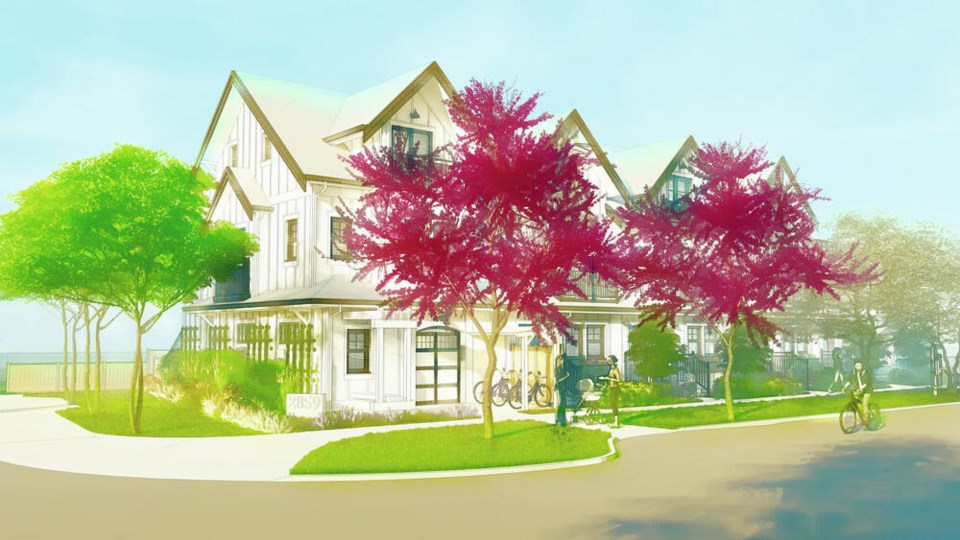In a bid to speed up new housing projects, address urban sprawl and tackle the environmental impact of housing, Saanich is considering a significant change to its parking requirements for new development.
Saanich council has directed staff to work on a bylaw amendment that will reduce the parking requirements for most residential building forms to one stall per unit. Currently most housing forms require two spots per unit, while it is 1.5 stalls per unit for apartment buildings.
Garden suites and basement suites at single-family homes are required to have a designated space.
It’s just too much, said Coun. Teale Phelps Bondaroff, who co-wrote the policy framework with Coun. Zac de Vries.
“Our parking minimums are way too high,” he said, noting the new policy will address housing needs and environmental concerns.
Phelps Bondaroff said the existing parking minimums drive urban sprawl as with more parking required there’s often less density possible, costs increase due to the expense of excavating for underground parking, building is delayed for the same reason and parking translates into a huge environmental problem.
Phelps Bondaroff said with paved parking you increase the amount of impervious surface, remove green space and encourage transportation modes like cars that the district is trying to move away from.
Bondaroff said he was inspired by a local resident who pointed out at a previous council meeting “we are in a climate and housing crisis not a parking crisis.”
The new policy framework passed on Monday with only Coun. Nathalie Chambers in opposition.
Chambers said while she agrees with parts of the policy, it doesn’t address reality.
“Yes it creates affordability, yes, it creates environmental protection in some regard and stops urban sprawl. But there’s also the reality that a lot of people in Saanich are still driving their cars and that’s not going to change,” she said.
“And when we reduce parking minimums, we put more cars on the streets, and when we put more cars on the streets, it’s not safer on residential streets for other people living there.”
Coun. Karen Harper, on the other hand, suggested the new policy doesn’t go far enough and really just reflects a lot of the work Saanich has already been doing.
A number of councillors pointed out there have been few multi-family projects in recent memory that haven’t asked for parking variances to allow for fewer parking spots, while council has already approved one nine-unit townhouse project on Richmond Road with no parking included.
“It’s almost a very modest proposal; it really does reflect what we’re currently doing, but it means we’ll continue to do that without having to have these things come to public hearing,” Harper said.
The new policy will speed along work being done to comply with provincial regulations that will soon forbid municipalities from requiring new developments to provide off-street parking in some instances.
While a number of councillors were concerned that the new policy, written by councillors as opposed to staff, might have overlooked some potential issues, district staff assured they had been part of the development of the policy.
Staff also assured council it would be bringing back a report on the new policy, along with the bylaw amendments, and would flag any issues at that point.
“We’re not going to be jumping out without a parachute,” said Mayor Dean Murdock. “Staff are still going to give their guidance in terms of what this might look like.”
The new policy requires a transportation demand management strategy be developed for residential projects of more than 12 units and that onsite loading zones will be required for residential building forms of more than 12 units.
“Overall, this really just tries to marry some of the ongoing work that staff are doing and it seeks to provide well thought recommendations that help us take the first step forward in streamlining and modernizing our parking requirements,” said De Vries, adding there will always be room for more analysis and changes.
>>> To comment on this article, write a letter to the editor: [email protected]



